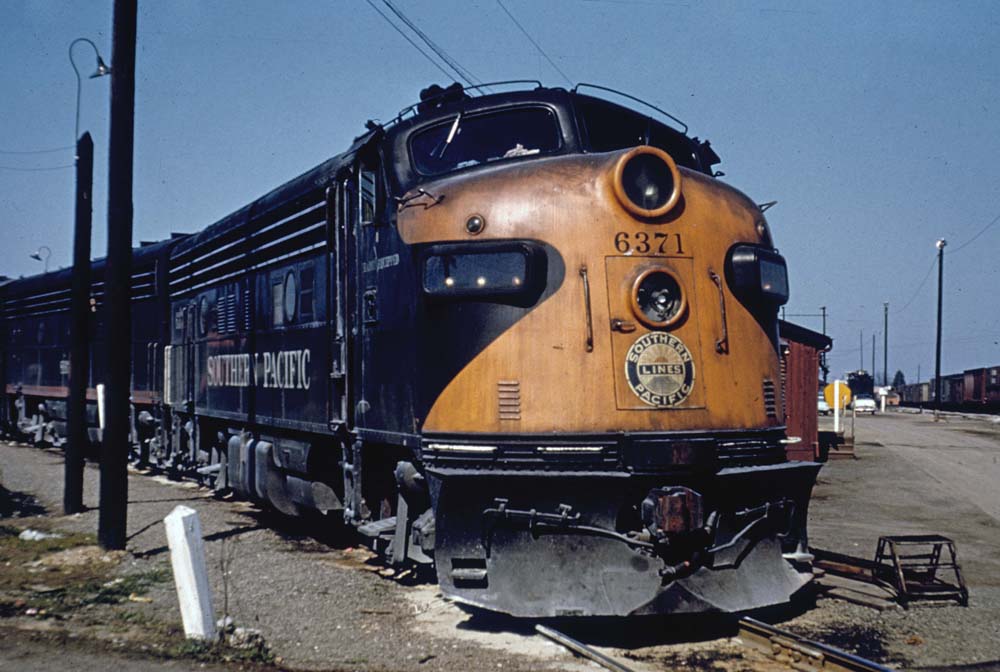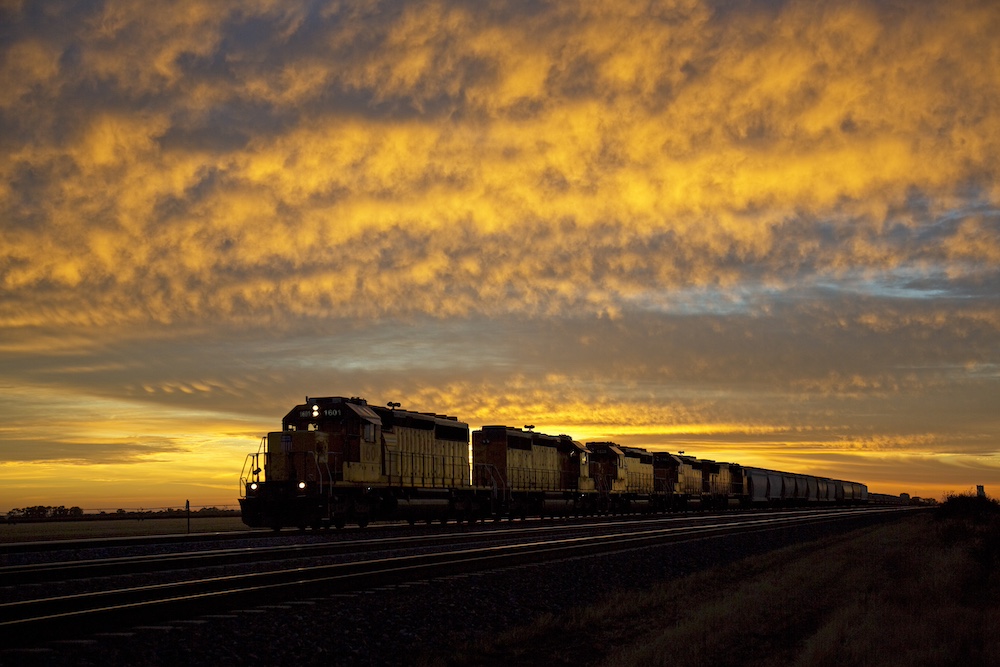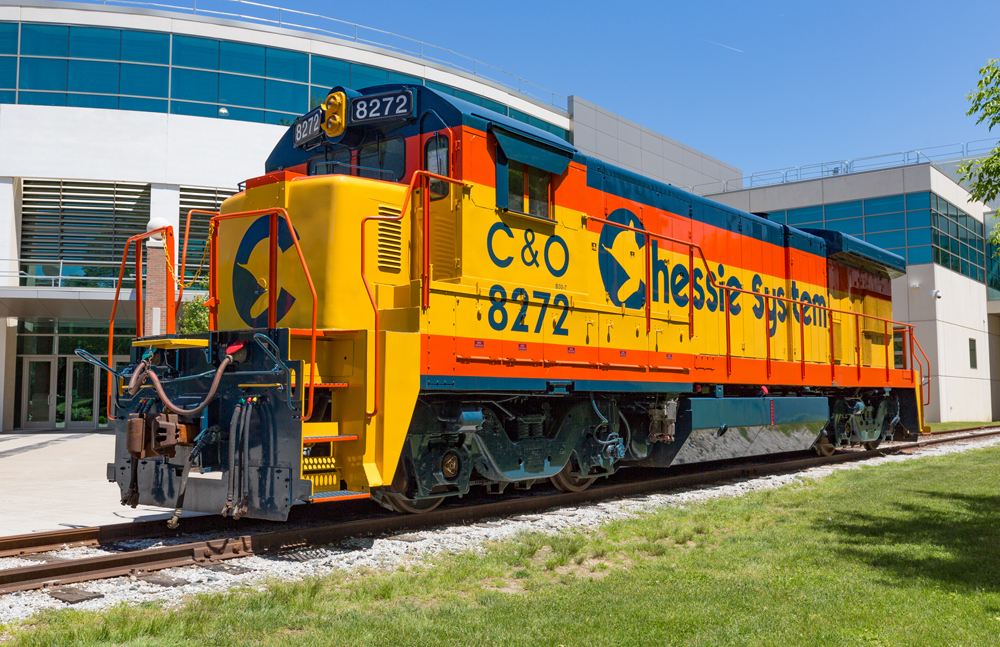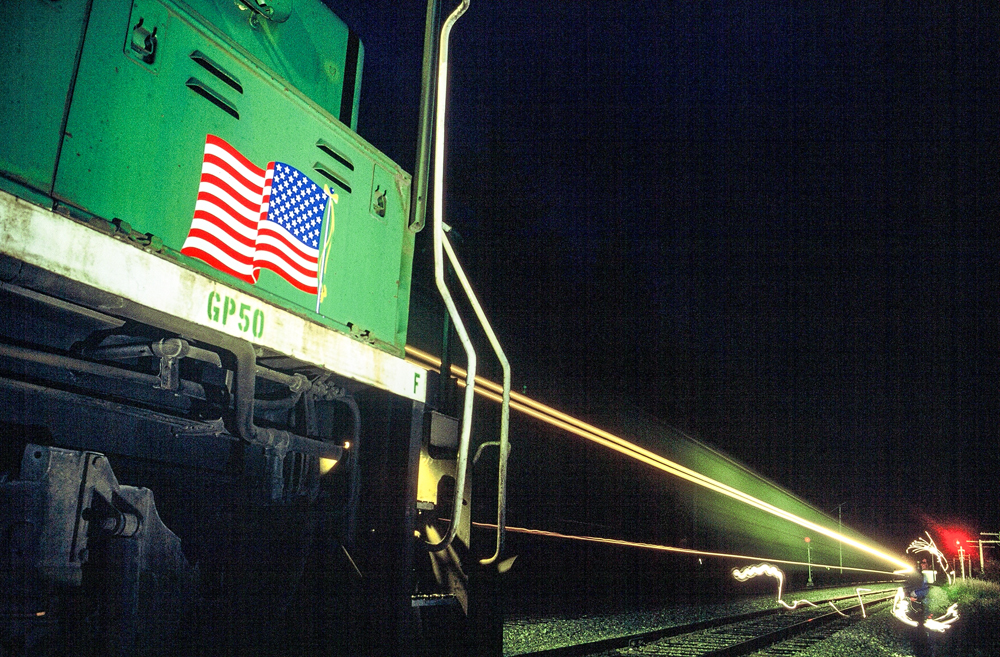How can we photographers improve our chances for wintertime success? How can we salvage a trip if either snow or trains fail to materialize as we imagine them beforehand? What if you live where wintertime isn’t snowy but a destination for snow birds? Here are some ideas for winter railroad photography, with snow or without it, with sunshine or without, and even without trains.
Snow, being white and reflective, can have a profound effect on exposure values (EV), especially in direct sunlight or moonlight. A snow-covered scene is typically 200-400 percent brighter than the same scene without snow. If you’re using a film or digital camera in auto-exposure mode, this requires an exposure compensation of around +1.0 to +2.0 EV.
Most digital cameras handle shadow detail far better than highlights, so it’s important not to overexpose. The finest level of control comes in manual mode, when you can set your exposure to just barely catch the brightest parts of the scene, letting everything else fall where it will. You can usually restore shadow detail in post-processing, but you can never bring back clipped highlights. Many digital SLR cameras offer histogram and highlight preview functions to help in this regard. Try to arrive early to your location and take several test shots to perfect your exposure before the train arrives.
Snow’s reflective properties can be a great benefit to night photography, allowing for much shorter exposure times. Combining high ISO film or sensitivity settings with a fast prime lens can open up a wide variety of photographic possibilities. Most lens manufacturers offer a few fast prime lenses at modest prices, such as a 50/1.8 for around $100, the slightly faster 50/1.4 or the slightly wider 35/2 for $300-400. Just one of these lenses can open up a wealth of nocturnal possibilities compared to zoom lenses in the f3.5-5.6 range.
For a snow-covered landscape under a full moon, you can come close to freezing the motion of a moving train with a fast lens and high ISO. Going-away photos often work better because they avoid the bright headlights that shine into your lens and ruin the exposure. In lighted areas like station platforms, you can often photograph at night without a tripod, especially when there’s snow on the ground.
There’s far more to photograph in winter than the Christmas card cliché of trains passing through snow-covered landscapes. Winter weather can add many challenges to railroad operations, all of which can lead to interesting photographs.
Beyond the obvious spectacles of plow and flanger operations, there are many subtler activities that are just as important to winter railroading and make good images. Blue flames from propane switch heaters can add visual ambience to nighttime pictures. Additional maintenance-of-way and hi-rail operations are common, both to deal with problems and to check for trouble in advance, and are also good subjects. Platforms at passenger stations must be kept clear of snow, whether by means of large machines or workers with brooms and shovels. Even something as simple as a railroader’s heavy coat and gloves, or a passenger’s frozen breath, can make for a striking image.
Instead of “cold and snowy,” in many parts of the country, winter weather is more typically “cool and wet.” Particularly in agricultural regions of the south and some temperate valleys of the west, winter is a time of renewal, when frequent rains provide moisture for another growing season. Some regions produce winter crops, and in many areas farmers begin plowing and planting in the winter months. All of these activities can provide interesting settings for railroad photography, especially with trains carrying seasonal agricultural commodities, such as tank cars of fertilizer. Wet weather can create attractive, often moody conditions for photography, turning fields into reflecting pools and adding a glistening sheen to roads and tracks.
So you’ve embarked upon that great winter railroad photography trip, only to find temperatures hovering just above freezing, with flat overcast skies above a landscape of unending grays and browns. And to top it all off, there’s nary a train in site. Before you pack it up and go home, consider all the options. You still have ample opportunity to create significant and meaningful railroad photographs, but the first thing you’ll have to do is abandon the idea of capturing the “perfect” winter greeting-card scene.
Chapter 13 of historian David McCullough’s book Brave Companions is entitled, “South of Kankakee: A Day with David Plowden.” As the title states, McCullough spent a day in the field with photographer David Plowden, who has trained his Hasselblads on everything from steam locomotives and railroad tracks to barns, steel mills, and bridges. While setting the scene, McCullough writes, “There is a nice breeze now out of the north, but the sky is still overcast. ‘A good day for details,’ Plowden assures me.”
Even in the more homogenized and digitized 21st century, the railroad landscape is still rife with interesting details that you can use to make graphically-compelling photographs. Often these details offer hints of connections to the past, and a simple stroll down an abandoned siding may lead to months of engaging historical research and return visits for additional photos. Instead of going (or staying) home on a gray-brown winter day, head for a city, town, or industrial district along the tracks, look carefully at what you see there, and make photographs.
The Center for Railroad Photography & Art’s 2010 “Conversations about Photography” conference, April 23-25 in Lake Forest, Ill., will include a presentation by photographer Jeff Brouws about “Viewing The Railroad Landscape as Archeology.” Brouws will relate numerous methodologies that railroad photographers can employ when tackling some of the ideas discussed above.
Trains contributor SCOTT LOTHES is a writer and photographer in Corvallis, Ore. He is project director for the Center for Railroad Photography and Art.




















